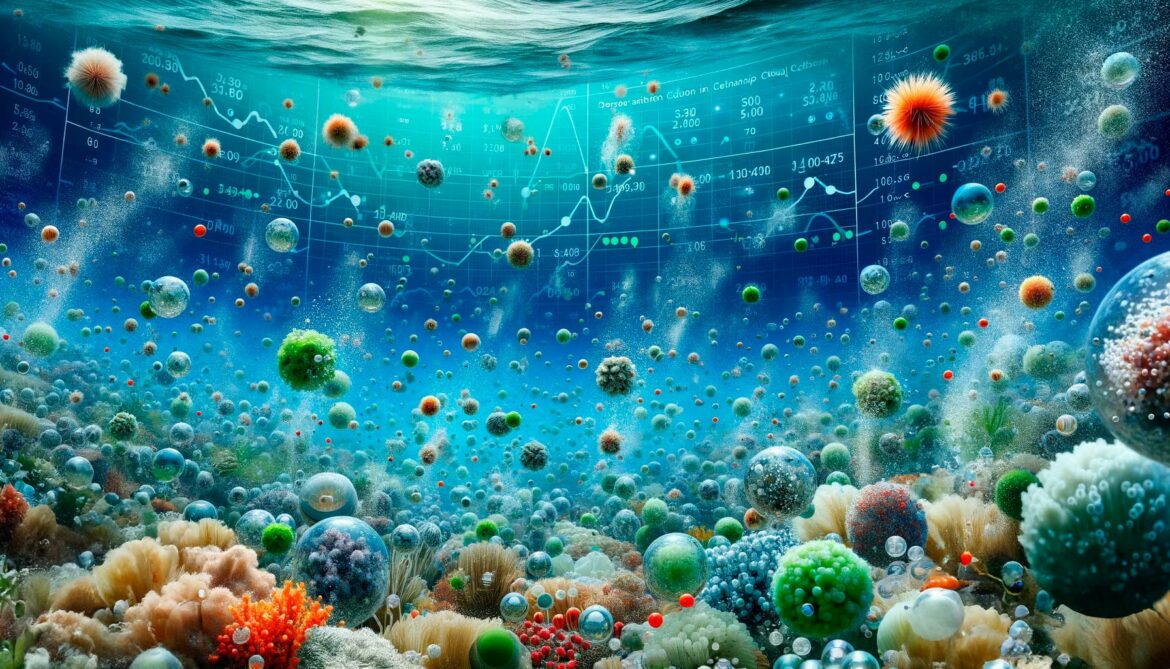Recent research set to be featured in the journal Nature has revealed that the ocean’s ability to absorb carbon dioxide from the atmosphere exceeds previous estimates by 20%, reaching an annual rate of 15 gigatonnes. This study, drawing attention from SciTechPost.com, primarily investigates the contribution of plankton in moving carbon to the ocean floor.
The study indicates an increased capacity of oceans to hold carbon dioxide, now estimated to be 20% higher than previous figures. This enhanced capacity is attributed to the action of plankton in carrying carbon to the ocean’s depths. Despite this revelation, the impact on the ongoing carbon dioxide emissions dilemma remains limited.
A new study, to be published in Nature on December 6, 2023, and involving an international research team including a CNRS biologist, has discovered that the ocean’s carbon storage capability is approximately 20% more than the figures reported in the latest IPCC assessment.[1] The research specifically examines the role of plankton in the natural movement of carbon from surface waters to the seabed.
Through the process of photosynthesis, plankton absorb carbon dioxide and transform it into organic matter. Upon their death, some of this plankton becomes ‘marine snow’, particles heavier than seawater that descend to the ocean floor. This process not only stores carbon at the seabed but also supplies vital nutrients to various deep-sea life forms, ranging from small bacteria to large deep-sea fish.
The study analyzed a comprehensive collection of data gathered since the 1970s by oceanographic vessels worldwide, enabling the researchers to digitally map the flow of organic matter across the global oceans. This analysis led to the revised estimate of the ocean’s carbon storage capacity at 15 gigatonnes annually, a 20% increase from the previous estimate of 11 gigatonnes annually reported in the IPCC’s 2021 report.
This reassessment marks a significant progression in our comprehension of the carbon exchange processes between the atmosphere and the ocean on a global scale. The researchers emphasize that this carbon absorption occurs over extensive time periods, spanning tens of thousands of years, and thus cannot counterbalance the rapid rise in CO2 emissions resulting from global industrial activities since 1750. Nevertheless, the study underscores the critical role of ocean ecosystems in the long-term regulation of the global climate.
Notes
- IPCC Climate Change 2021 Report, The Physical Science Basis, Chapter 5, Figure 5.12: Figure AR6 WG1 | Climate Change 2021: The Physical Science Basis (ipcc.ch)
- From the Laboratoire des Sciences de l’Environnement Marin LEMAR (CNRS/UBO/IFREMER/IRD)
Reference: “Biological carbon pump estimate based on multi-decadal hydrographic data” by Wei-Lei Wang, Weiwei Fu, Frédéric A. C. Le Moigne, Robert T. Letscher, Yi Liu, Jin-Ming Tang and François W. Primeau, 6 December 2023, Nature.
DOI: 10.1038/s41586-023-06772-4
Table of Contents
Frequently Asked Questions (FAQs) about Ocean Carbon Storage
How much more carbon dioxide can oceans store than previously estimated?
Oceans have a 20% higher capacity to store carbon dioxide than earlier estimates, now calculated at 15 gigatonnes annually.
What is the primary method of carbon transportation to the ocean floor?
Plankton play a key role in transporting carbon to the ocean floor. When plankton die, they form ‘marine snow’, which sinks to the seabed, sequestering carbon.
What is the significance of the new study on ocean carbon storage?
The study, to be published in Nature, reveals a significant increase in our understanding of the ocean’s role in global carbon cycling, though it doesn’t fully address the current CO2 emission crisis.
How does plankton contribute to carbon sequestration in oceans?
Plankton absorb CO2 and convert it into organic tissue through photosynthesis. Upon their death, they become denser particles that sink, effectively storing carbon on the ocean floor.
Does the new finding on ocean carbon storage solve the CO2 emission problem?
No, while the study highlights the ocean’s increased capacity for carbon storage, it emphasizes that this process is too slow to offset the rapid rise in CO2 emissions from industrial activities.
More about Ocean Carbon Storage
- Nature Study on Ocean Carbon Storage
- IPCC Climate Change 2021 Report
- CNRS Laboratoire des Sciences de l’Environnement Marin (LEMAR)
- SciTechPost Article



5 comments
Nature’s way of balancing, but we’re still in trouble. _xD83C__xDF0E__xD83D__xDE14_
Plankton doing big job, eat CO2, go to seabed. wow!
plankton to the rescue! they’re the real MVPs in carbon game.
ocean can hold more carbon? 20% more? study says. not sure it helps CO2 prob tho.
So, oceans are like carbon sponges? Good news but not enough. _xD83C__xDF0A__xD83C__xDF0D_